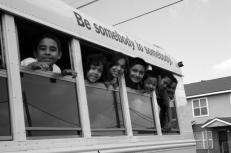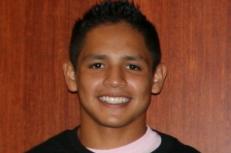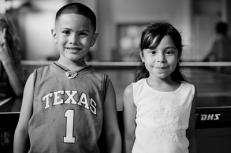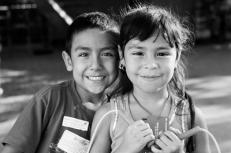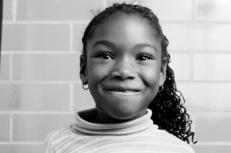Almost 33% of all Austin public high school students—and nearly 50% of African-American, Hispanic, and Native American students—fail to graduate from public high school with their class. The number one reason kids drop out of school is a lack of belonging.
The Boys & Girls Clubs of the Austin Area (BGCAA) is succeeding at helping kids graduate from high school
In this article, see how one student’s discovery of the Boys & Girls Club is helping him avoid becoming a statistic, and hear from youth development professional Patti Smith on how Boys & Girls Clubs create a sense of belonging that helps students beat the odds and become productive, responsible young adults. Patti currently serves as Club Director for Lanier High School for Boys & Girls Clubs of the Austin Area (BGCAA.)
BGCAA is the local chapter of the largest youth development agency in America, providing programs and services for 10,000 kids a year who live in the most disadvantaged neighborhoods in Austin. Their mission is “to inspire and enable all young people, especially those who need us most, to realize their full potential as productive, responsible, and caring citizens.” At Reagan High School in Austin, where only 47% of seniors graduated, 94% of the students participating in the BGCAA Reagan High School Club graduated. At Lanier and LBJ High Schools, with respective graduation rates of just 63% and 83%, Patti Smith and LBJ Club Director Michael Quist led each of their seniors to graduation. They all began college or additional professional education this fall.
An Inside Look at The Boys & Girls Clubs Model
As the Club Director at Lanier High School, Patti Smith has a unique perspective on what it takes to achieve the Club’s mission.
“I am committed to creating an atmosphere that lets every student know they belong to a community that cares about them and that will provide resources to help them succeed. Each of our fifteen Clubs gives kids a reliable, stable, and safe place they can call their own—even if only for a few hours a day.
It is imperative for us to be here, to be here consistently, and to make sure that we know every kid’s name and something about him or her. Participation in a less formal setting allows young people to open up, relax, and reflect on themselves and the group. While we are providing food, a game of dominoes or basketball, and homework help, we’re also allowing them to let their guard down and tell us what they need. If students need help, they know they can turn to us.
I make sure each student has a sense of ownership and responsibility for the Club. We encourage them to come up with their own ideas for The Club, or a project to pursue. Whether it is learning about college, research, art projects, or computer skills, I expect them to identify their need and act upon it. We will help make it happen for them, but they need to set it in motion. Whatever it is they need, we provide those things for them so they know that The Club is a place where they will always have a say and be important.
Once we have demonstrated our commitment and created a sense of belonging, I then make sure they know that I expect success from them. All of my students know their responsibilities: graduate from high school, become productive, contribute positively to their environment, to their community and to the people around them.
By the time they graduate, my students understand that everything they do, no matter how little it may seem, affects somebody else on some level.” Tyra Roland, former Youth of the Year winner, says, "The things I do affect someone else, so by me graduating, I'm not playing into the statistic of this kid from the inner city that is being talked about. I've learned that what I do matters, that people will be there to support me when I do what's right, and that I have someone to lean on who can help me reach my goals so that I'm not a lost person."
Meet Oscar
Oscar Ramirez, a junior at Lanier High School, could easily become a statistic. He could be among the 15.7% of economically disadvantaged kids in Texas schools who drop out of high school. He could be among the 37% of high school seniors at his high school who will not graduate with their class. He could be on track to earn $7,300 less each year than his peers who receive their diploma. That is, if he were able to get a job: unemployment rates for high school drop outs is 14.6% (double that for Hispanic or Latino teens) -- 66% higher than the rate for high school graduates (9.7%).
But Oscar is on track to beat those statistics with the help of the Boys & Girls Clubs of the Austin Area. Each day, The Club gives him—and 1,500 Austin students—a community, tools, and mentors that give hope and opportunity for a brighter future. Most of all, the Club is a place where Oscar belongs.
It wasn’t easy for Oscar to join The Club. Seeing his peers participate in Club activities fueled his desire to find a place he could find friendship and support. He asked his parents many times to let him join, but they needed him to take care of his younger siblings after school while they worked. They were skeptical of a program run by people they didn’t know and who didn’t speak their language.
Oscar’s persistence paid off. After allowing Oscar to join The Club’s soccer team, his parents quickly recognized the value of Oscar belonging to a community that was taking an interest in him and that wanted to help him become a better young man. As a family, they were able to adjust their schedules so Oscar could finally become a Club member.
Now a day doesn’t go by that Oscar isn’t at The Club. He is developing caring relationships with his new friends and the Club staff. He receives tutoring, works with volunteers to learn technical skills such as Photoshop, and participates in a self-defense class. Oscar recently visited a BGCAA Board of Directors meeting and stated, “I really appreciate everything you do for us every day. Thank you for the opportunity to experience new things.”
Oscar knows that he is part of a community that will support him to make good choices. He says it best himself: “If anyone wants to do drugs, they aren’t hard to find. Kids do drugs for something to do. I don’t want that, or need it, because The Club gives me something to do. You have other options; drugs aren’t the only thing to do."
A piece of truth that runs through everything we do at BGCAA is that everybody who was ever anybody had a somebody. Whether it was a teacher, a coach, a mentor, or a friend, we all had somebody who stood at a crucial crossroads and pointed the way. We belonged to a group or a cause or a community that was invested in our success.
Boys & Girls Clubs are committed to helping every child—no matter their income, their history, or their neighborhood—find the somebody or the group that will tell them they belong. And each child who finds success will make Austin a better place for today and for many years to come.





